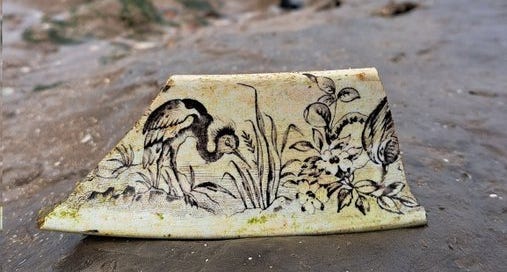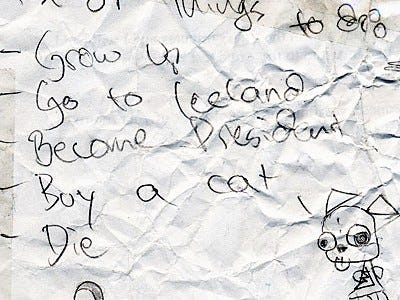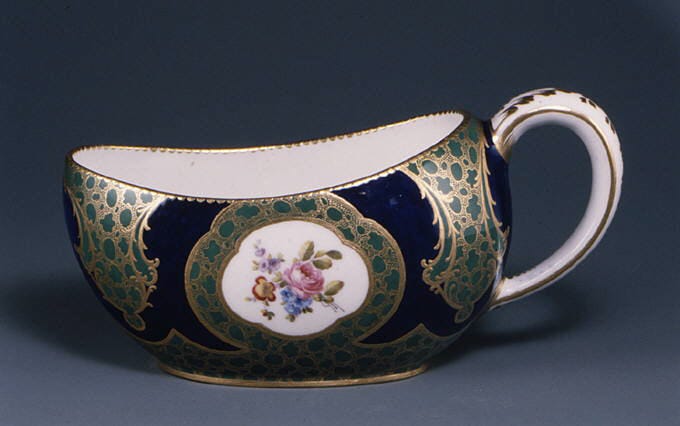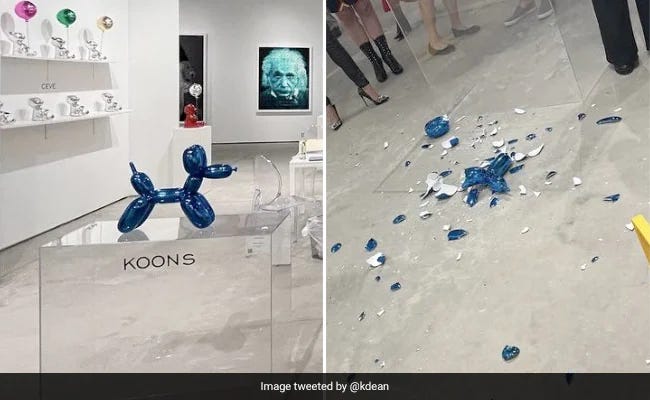What We Are Looking At: Mudlarking on River Banks
The Thames River in central London changes height by about 23ft twice a day. Mudlarks scour its banks looking for things that have been lost over the l,000 years.
What is Mudlarking?
Last week just threw me off. The hometown Chiefs won the Super Bowl and so school was off Wednesday, along with scheduled off days of Friday and this Monday, and it was supposed to snow last Thursday and all in all, I did not devote much energy to the art project.
Which is fine, because this is my project and I get to make the rules and I have plenty of things to feel bad about, I don’t need to regret not getting more writing done. But of course I do feel bad about it. Such is life.
Anyway, this week’s installment is about found objects. There was a project that started in Chicago around 2000 that was called “Found.” It was the early stages of the internet, before Everyone Was Online, but you could feel the social media thing in the air. This zine, for lack of a better word, found notes, love letters, to-do lists, etc and published them in paper form. There is something essential about finding a person’s to-do list, with a few items crossed off. Something both mundane and profound.
When I look at art, I am mostly looking for that profound and mundane sense that another human made it - that they are showing me something about themselves that is personal and vulnerable.
Mudlarking is finding stuff in the banks of rivers. I first heard about it on Twitter.

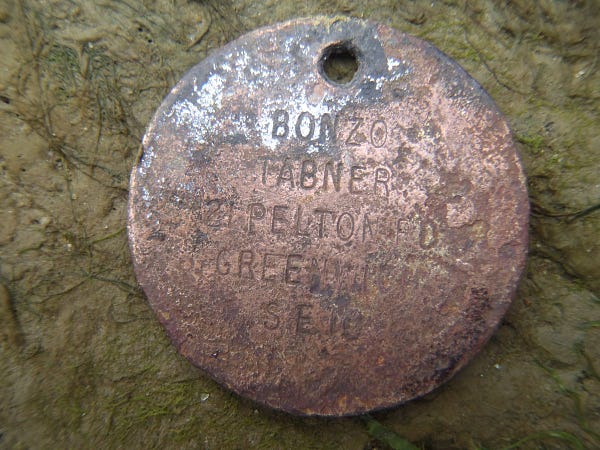

Mudlarking has taken off in the last couple years. Nicola White at Tide Line Art is my favorite. Books have been written. Organized tours sell out. They find things from Roman coins and Saxon buttons to 20th century perfume bottles. Each thing a glimpse into the past. A glimpse of a person, who would pull out a clay pipe along the Thames and somehow drop it into the water.
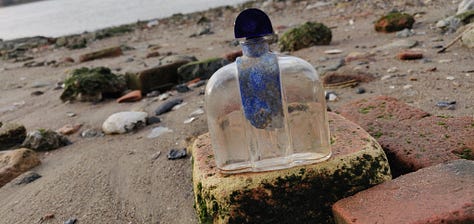
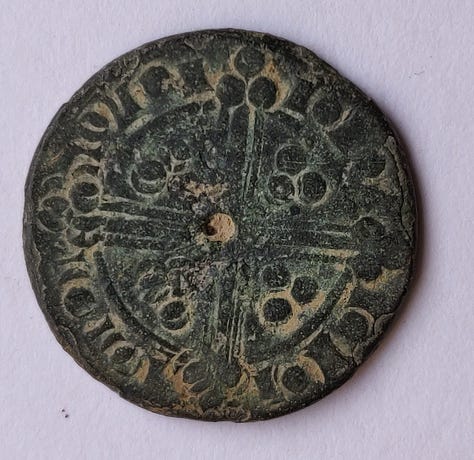
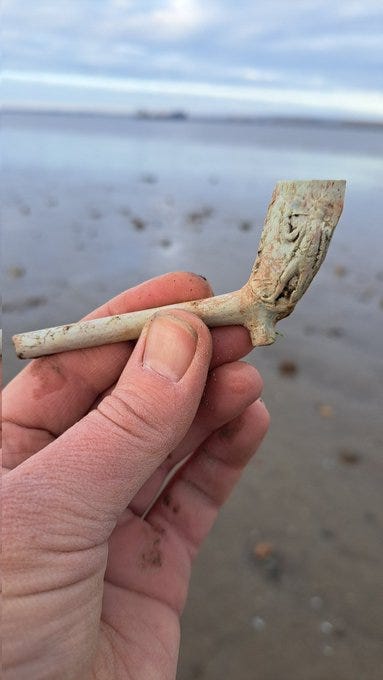
History, as they like to say, is written by the winners. It is measured out in great wars and great achievements. Along the way, a lot of regular people smoke pipes and don perfumes. They just discovered a 5,000 year old bar in what is now southern Iraq. Imagine that, sitting in a pub 5,000 years ago. I wonder what they complained about back then.
At almost every city art museum in America they have a section of old European pottery. Often divided into regions, this decorative pottery is lovely to look at for it’s decorative purpose. You can imagine a person from antique’s roadshow talking about the “fine craftmanship.” Which is all fine and good, but would it be as interesting if it was dated 2004. What if it was made with machines, laser printed to perfection? No I think what makes old pottery interesting is the people behind it. The people who might have used it. Museums are filled with dinner plates and chamber pots.
But what also interests me is what happens when they break. What happens when the great houses fall, all the tea cups and pipes, sold off, packed up, sent to family in America. Who knows what will happen.
When I look at old broken objects, I can’t help but think of the 3 deaths. If you are unfamiliar, it’s an idea that we all get 3 deaths, 1st is when we biologically die, the 2nd is when we are buried (or it is in somehow acknowledged by others that we are dead), and the third death, is the last time anyone thinks of you. Maybe they say your name out loud, maybe an historian reads your name in the record of deeds 150 years after you died. Does it count, when Nicola White finds your pipe coughed up from the muddy bank of the Thames and she holds it and wonders, who smoked this pipe? Does it count when I read about it?
Mudlarking the Missouri River
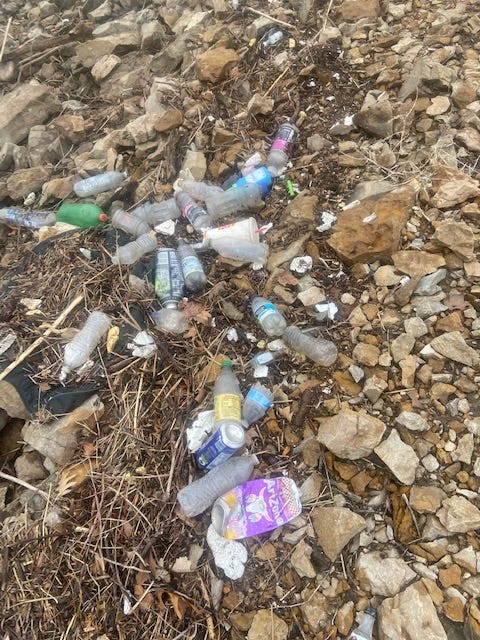
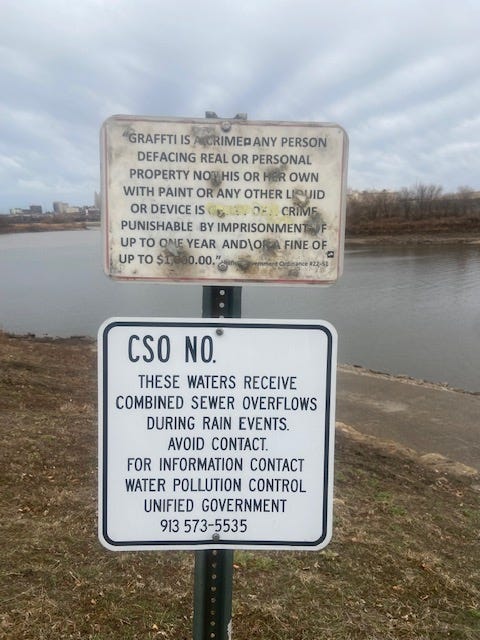
For the purposes of finding old trinkets, the Thames has a lot going for it that the Missouri river does not. First and foremost the Thames is a tidal estuary that rises and falls 23 feet twice each day. This ebb and flow makes for a good churning that keeps turning things up. The one way flow of the mighty MO has the opposite effect.
And then there is the thousands of years of continuous settlement by a large population that has specialized in the creation of trinkets such as buttons and coins. So it was never going to be an easy task. But, what I won’t do for this project?
I went down to Kaw Point, which is a place that Lewis & Clark stopped on their famous expedition. It is kind of the only place you can get to the bank of the River in less than 15 minutes from my house. If you try to get down next to the Casinos an ominous voice amplifies from the heavens, “This is a restricted area!”
It was mostly plastic bottles. Plastic water. Plastic wine. Plastic vodka. Broken lighters. Mussel shells.
What was I looking for? Something with a name. Something that said, “I was here.” This stuff is all too new to tell that kind of story. A broken chair and an empty worm container said “I was here, fishing, and I don’t clean up after myself.” It’s a sad story, but not particularly unique or for that matter interesting.
I notice that the Mudlarkers of the Thames do a lot of river clean up and conservation. Funny how looking for old trash inspires us to clean up after ourselves. I guess I should say, it is much easier to judge ourselves as being unworthy of remembering, than it is to dismiss the thought of a Kanza scout sitting on the bank of this river 25 years before Lewis & Clark and dropping an arrowhead.
Anyway, that is what we are looking at this week, Pottery chards on the banks of rivers - the souls of normal people remembered.

One more Pottery Chard
A couple weeks ago a sculpture by Jeff Koons was on display at a gallery in Miami art gallery and was knocked over and shattered. I would like a piece of that broken sculpture. Have a great week. And please give @tidelineart a follow on Twitter.

